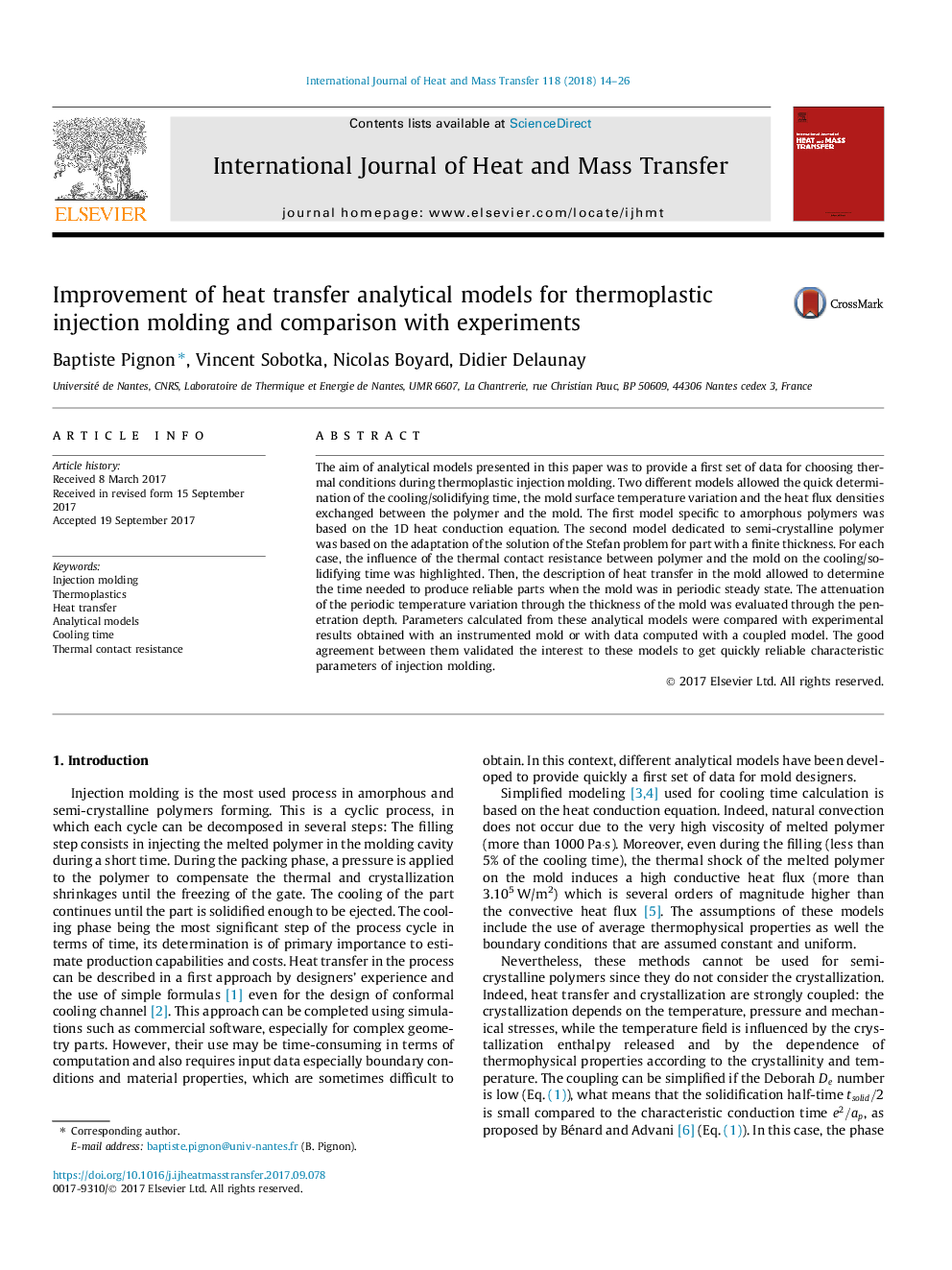ترجمه فارسی عنوان مقاله
بهبود مدل های تحلیلی انتقال حرارت برای قالب گیری تزریقی گرمانرم و مقایسه با آزمایشات
عنوان انگلیسی
Improvement of heat transfer analytical models for thermoplastic injection molding and comparison with experiments
| کد مقاله | سال انتشار | تعداد صفحات مقاله انگلیسی |
|---|---|---|
| 151587 | 2018 | 13 صفحه PDF |
منبع

Publisher : Elsevier - Science Direct (الزویر - ساینس دایرکت)
Journal : International Journal of Heat and Mass Transfer, Volume 118, March 2018, Pages 14-26
ترجمه کلمات کلیدی
قالب گیری تزریقی، ترموپلاستی، انتقال گرما، مدل های تحلیلی، زمان خنک کننده، مقاومت در برابر حرارت،
کلمات کلیدی انگلیسی
Injection molding; Thermoplastics; Heat transfer; Analytical models; Cooling time; Thermal contact resistance;

